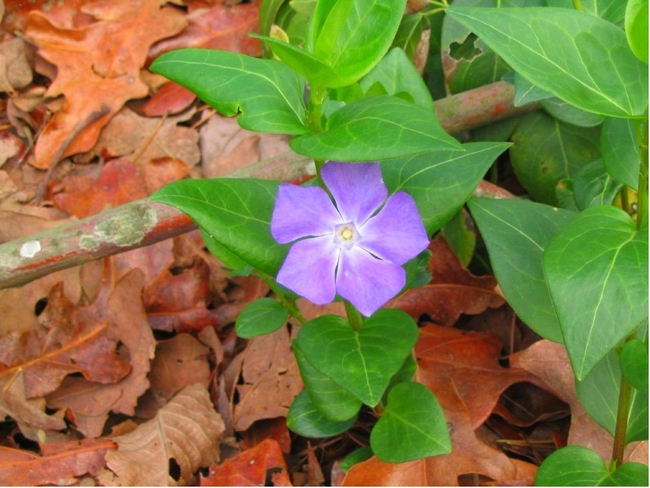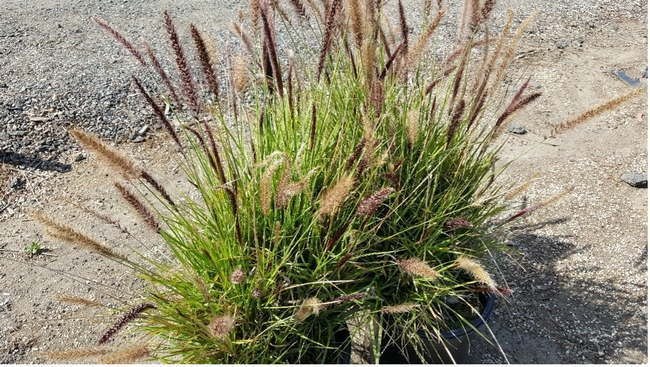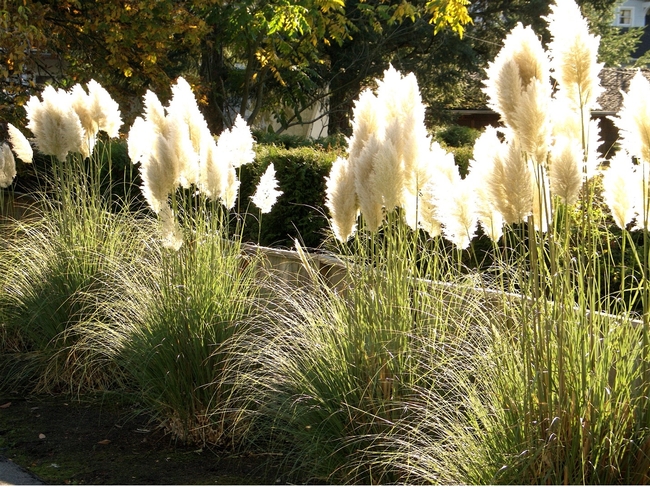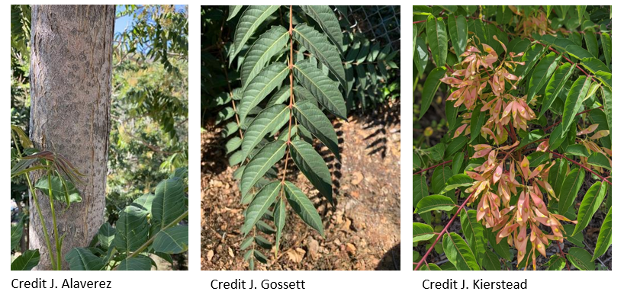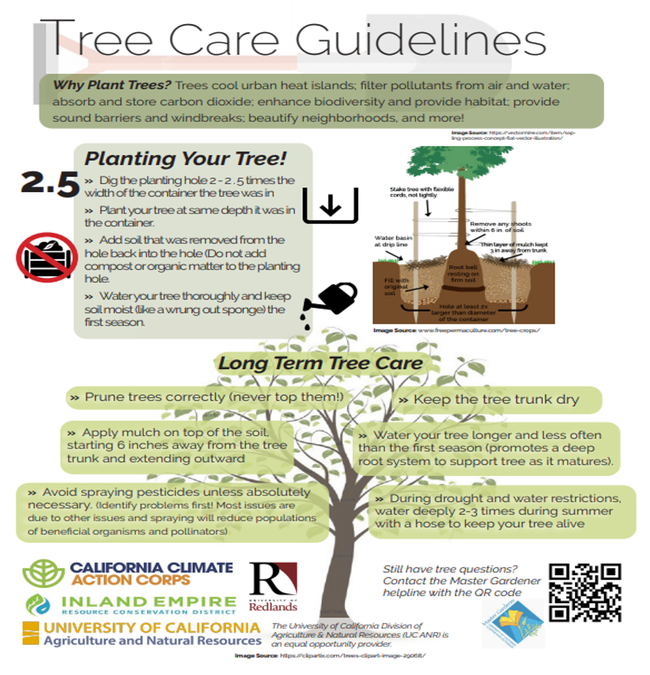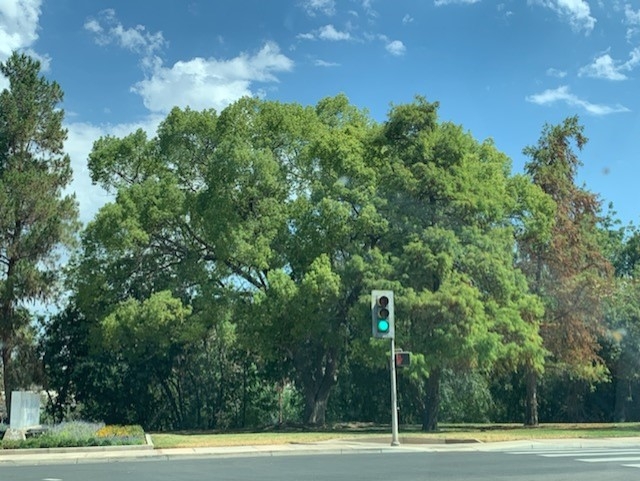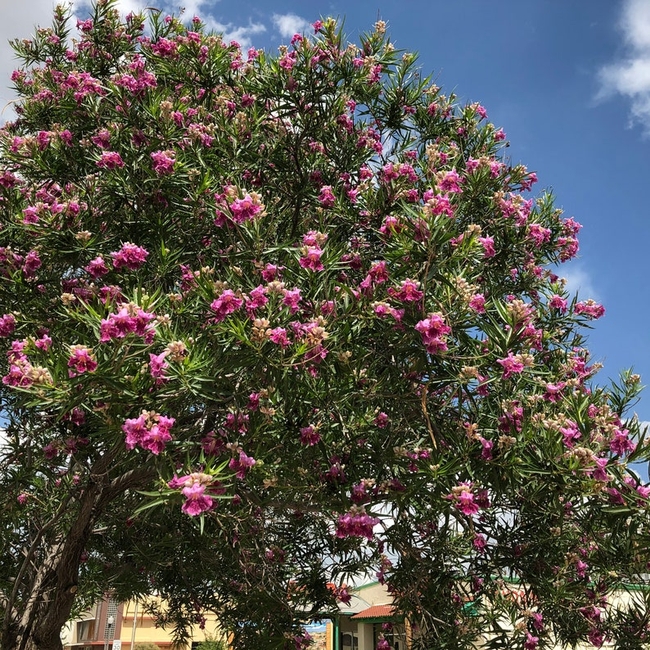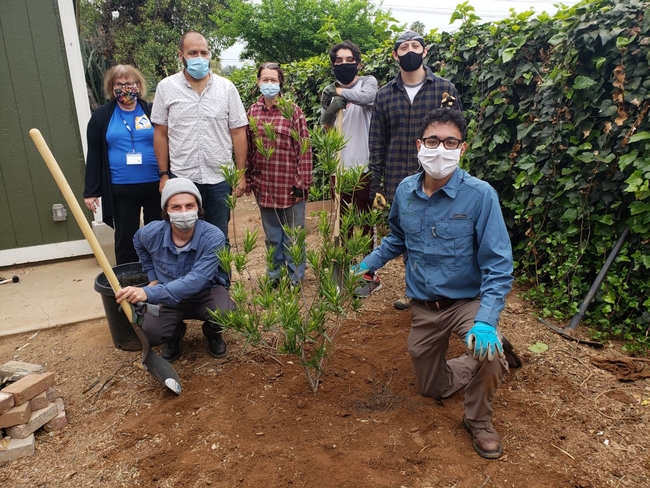Posts Tagged: california
California Invasive Species Week: Say No to Invasive Plants and Garden for a Greener California
As California Invasive Species Week (June 3-11) approaches, it's time to raise awareness about the impact of invasive plants on our natural ecosystems and the importance of making informed plant choices. Invasive species can have detrimental effects on local flora and fauna, often outcompeting other plants for resources and disrupting local ecosystems. By selecting plants that are well-suited to your environment and not invasive, you can make a positive contribution to preserving California's diverse landscapes.
Many invasive plants can be aesthetically pleasing and low-maintenance, making them a popular choice for gardeners. However, invasive plants can spread rapidly, taking over natural habitats and causing significant environmental damage. Invasive species often have few natural predators, enabling them to grow uncontrollably and outcompete other plants for resources like water, sunlight, and nutrients. This can lead to the loss of biodiversity, reduced habitat quality for wildlife, and increased risk of erosion and wildfires.
Examples of Invasive Plants in California:
1. Periwinkle (Vinca major) - This evergreen groundcover is a popular species because of its beautiful purple blooms. Periwinkle forms dense mats that can smother native plants and alter soil chemistry. Instead of periwinkle, try planting native groundcovers like California lilac (Ceanothus spp.) or hummingbird sage (Salvia spathacea).
2. Fountain grass (Pennisetum setaceum) - This ornamental grass is highly adaptable and has invaded many natural habitats, including grasslands and coastal sage scrub. Instead, opt for native grasses like purple needlegrass (Stipa pulchra) or deergrass (Muhlenbergia rigens or the smaller version Muhlenbergia dubia).
3. Pampas grass (Cortaderia selloana) - A tall, clumping grass with feathery blooms that can quickly dominate landscapes and outcompete native species. Consider planting native ornamental grasses such as blue grama grass (Bouteloua gracilis) or switchgrass (Panicum virgatum) as alternatives to pampas grass.
4. Tree of heaven (Ailanthus altissima) - This fast-growing tree can release chemicals that inhibit the growth of other plants and can sprout vigorously from root fragments. Plant California native trees like sycamore (Platanus racemosa) or western redbud (Cercis occidentalis) instead of the invasive tree of heaven.
As we celebrate California Invasive Species Week, remember the importance of choosing native plants for your garden. By doing so, you can preserve biodiversity, and contribute to the overall health of our communities. The UC Master Gardener Program is a resource for guidance and education in sustainable gardening practices, including the selection of non-invasive plants. By working together, we can protect California's rich and diverse landscapes for generations to come. To learn more about mindful plant selection and how to create a beautiful, sustainable, and environmentally-friendly garden, visit the UC Master Gardener Program at mg.ucanr.edu/findus. Connect with your local UC Master Gardener Program, and access a wealth of gardening information tailored to your local climates and ecosystems.
Additional Resources:
- California Invasive Plant Council (Cal-IPC) - https://www.cal-ipc.org/ - Cal-IPC is a leading organization dedicated to protecting California's wildlands from invasive plants through research, restoration, and education.
- California Native Plant Society (CNPS) - https://www.cnps.org/ - CNPS is a non-profit organization that promotes the understanding and appreciation of California's native plants and preserves them in their natural habitat.
- PlantRight - https://plantright.org/ - PlantRight works with California's nursey industry to keep invasive plants out of our landscapes and promotes the sale of non-invasive alternatives.
Help keep the conversation going during California Invasive Species Week by sharing your native plant success stories on social media using the hashtag #CAInvasiveSpeciesWeek. Participate in local events, workshops, and volunteer opportunities to increase awareness and take action against invasive species in your community. Together, we can make a difference and preserve California's unique and vibrant ecosystems for future generations!
Climate-Change Resources
University of California UC ANR Green Blog (Climate Change and Other Topics) https://ucanr.edu/blogs/Green/index.cfm?tagname=climate%20change (full index)
Examples:
- Save Trees First: Tips to Keep Them Alive Under Drought https://ucanr.edu/b/~CdD
- Landscaping with Fire Exposure in Mind: https://ucanr.edu/b/~G4D
- Cities in California Inland Areas Must Make Street Tree Changes to adapt to Future Climate https://ucanr.edu/b/~oF7
Drought, Climate Change and California Water Management Ted Grantham, UC Cooperative Extension specialist (23 minutes) https://youtu.be/dlimj75Wn9Q
Climate Variability and Change: Trends and Impacts on CA Agriculture Tapan Pathak, UC Cooperative Extension specialist (24 minutes) https://youtu.be/bIHI0yqqQJc
California Institute for Water Resources (links to blogs, talks, podcasts, water experts, etc.) https://ciwr.ucanr.edu/California_Drought_Expertise/
UC ANR Wildfire Resources (publications, videos, etc.) https://ucanr.edu/News/For_the_media/Press_kits/Wildfire/ (main website)
-UC ANR Fire Resources and Information https://ucanr.edu/sites/fire/ (main website)
-Preparing Home Landscaping https://ucanr.edu/sites/fire/Prepare/Landscaping/
UC ANR Free Publications https://anrcatalog.ucanr.edu/ (main website)
- Benefits of Plants to Humans and Urban Ecosystems: https://anrcatalog.ucanr.edu/pdf/8726.pdf
-Keeping Plants Alive Under Drought and Water Restrictions (English version) https://anrcatalog.ucanr.edu/pdf/8553.pdf
(Spanish version) https://anrcatalog.ucanr.edu/pdf/8628.pdf
- Use of Graywater in Urban Landscapes https://anrcatalog.ucanr.edu/pdf/8536.pdf
- Sustainable Landscaping in California https://anrcatalog.ucanr.edu/pdf/8504.pdf
Other (Non-UC) Climate Change Resources
Urban Forests and Climate Change. Urban forests play an important role in climate change mitigation and adaptation. Active stewardship of a community's forestry assets can strengthen local resilience to climate change while creating more sustainable and desirable places to live. https://www.fs.usda.gov/ccrc/topics/urban-forests
Examining the Viability of Planting Trees to Mitigate Climate Change (plausible at the forest level) https://climate.nasa.gov/news/2927/examining-the-viability-of-planting-trees-to-help-mitigate-climate-change/
Reports and other information resources coordinated under the auspices of the United Nations and produced through the collaboration of thousands of international scientists to provide a clear and up to date view of the current state of scientific knowledge relevant to climate change. United Nations Climate Action
Scientific reports, programs, action movements and events related to climate change. National Center for Atmospheric Research (National Science Foundation)
Find useful reports, program information and other documents resulting from federally funded research and development into the behavior of the atmosphere and related physical, biological and social systems. Search and find climate data from prehistory through to an hour ago in the world's largest climate data archive. (Formerly the "Climatic Data Center") National Centers for Environmental Information (NOAA)
Think tank providing information, analysis, policy and solution development for addressing climate change and energy issues (formerly known as the: "Pew Center on Global Climate Change"). Center for Climate & Energy Solutions (C2ES)
Mapping Resilience: A Blueprint for Thriving in the Face of Climate Disaster. The Climate Adaptation Knowledge Exchange (CAKE) was launched in July 2010 and is managed by EcoAdapt, a non-profit with a singular mission: to create a robust future in the face of climate change by bringing together diverse players to reshape planning and management in response to rapid climate change. https://www.cakex.org/documents/mapping-resilience-blueprint-thriving-face-climate-disaster
Cal-Adapt provides a way to explore peer-reviewed data that portrays how climate change might affect California at the state and local level. We make this data available through downloads, visualizations, and the Cal-Adapt API for your research, outreach, and adaptation planning needs. Cal-Adapt is a collaboration between state agency funding programs, university and private sector researchers https://cal-adapt.org/
Find reports, maps, data and other resources produced through a confederation of the research arms of 13 Federal departments and agencies that carry out research and develop and maintain capabilities that support the Nation's response to global change. Global Change (U.S. Global Change Research Program)
The Pacific Institute is a global water think tank that combines science-based thought leadership with active outreach to influence local, national, and international efforts to develop sustainable water policies. https://pacinst.org/our-approach/
Making equity real in climate adaptation and community resilience policies and programs: a guidebook. https://greenlining.org/publications/2019/making-equity-real-in-climate-adaption-and-community-resilience-policies-and-programs-a-guidebook/
Quarterly CA Climate Updates and CA Drought Monitor Maps (updated each Thursday) https://www.drought.gov/documents/quarterly-climate-impacts-and-outlook-western-region-june-2022
Fall is a Great Time to Plant Trees
Fall is a great time to plant trees in our urban landscapes. Temperatures are cooler than summer and trees adjust to transplanting much better than during the heat of summer.
Why trees? Trees reduce surface temperatures of asphalt and other dark impervious surfaces by over 60 degrees F in inland cities during spring and summer. They also reduce energy usage and costs, enhance habitat and pollinator populations, absorb and store carbon dioxide, provide oxygen for our subsistence, reduce erosion, reduce glare and noise, add beauty to our neighborhoods, and enhance mental and emotional health.
I am appreciative to UCCE San Bernardino County Master Gardener trainee Alex Shippee for his graphic design wizardry, making a drab publication on planting trees inviting and appealing to read.
Have more questions about your trees? Contact the UC Cooperative Extension Master Gardener tree helpline in San Bernardino County. 22trees4tomorrow@gmail.com or our general telephone helpline at (909)387-2182 or email mgsanbern@ucanr.edu where your gardening questions can also be addressed. (You will also reach this website by following the QR code link above.) We also have this handout available in Spanish.
Climate change resources for Horticulturists, Government Officials, and UCCE Master Gardeners
Climate Change Resources for Horticulturists and UCCE Master Gardeners
Updated by Janet Hartin jshartin@ucanr.edu 8/17/2022
University of California UC ANR Green Blog (Climate Change and Other Topics) https://ucanr.edu/blogs/Green/index.cfm?tagname=climate%20change (full index)
Examples:
- Save Trees First: Tips to Keep Them Alive Under Drought https://ucanr.edu/b/~CdD
- Landscaping with Fire Exposure in Mind: https://ucanr.edu/b/~G4D
- Cities in California Inland Areas Must Make Street Tree Changes to adapt to Future Climate https://ucanr.edu/b/~oF7
UC Climate Change Videos
Drought, Climate Change and California Water Management Ted Grantham, UC Cooperative Extension specialist (23 minutes) https://youtu.be/dlimj75Wn9Q
Climate Variability and Change: Trends and Impacts on CA Agriculture Tapan Pathak, UC Cooperative Extension specialist (24 minutes) https://youtu.be/bIHI0yqqQJc
California Institute for Water Resources (links to blogs, talks, podcasts, water experts, etc.) https://ciwr.ucanr.edu/California_Drought_Expertise/
UC ANR Wildfire Resources (publications, videos, etc.) https://ucanr.edu/News/For_the_media/Press_kits/Wildfire/ (main website)
UC ANR Fire Resources and Information https://ucanr.edu/sites/fire/ (main website)
Preparing Home Landscaping https://ucanr.edu/sites/fire/Prepare/Landscaping/
UC ANR Free Publications https://anrcatalog.ucanr.edu/ (main website)
Keeping Plants Alive Under Drought and Water Restrictions (English version) https://anrcatalog.ucanr.edu/pdf/8553.pdf
(Spanish version) https://anrcatalog.ucanr.edu/pdf/8628.pdf
Use of Graywater in Urban Landscapes https://anrcatalog.ucanr.edu/pdf/8536.pdf
Sustainable Landscaping in California https://anrcatalog.ucanr.edu/pdf/8504.pdf
Other UC (Non-ANR) scientists
Daniel Swain (UCLA): website: https://weatherwest.com/ twitter: @Weather_West
Non-UC Climate Change Resources
Urban Forests and Climate Change. Urban forests play an important role in climate change mitigation and adaptation. Active stewardship of a community's forestry assets can strengthen local resilience to climate change while creating more sustainable and desirable places to live. https://www.fs.usda.gov/ccrc/topics/urban-forests
Examining the Viability of Planting Trees to Mitigate Climate Change (plausible at the forest level) https://climate.nasa.gov/news/2927/examining-the-viability-of-planting-trees-to-help-mitigate-climate-change/
Reports and other information resources coordinated under the auspices of the United Nations and produced through the collaboration of thousands of international scientists to provide a clear and up to date view of the current state of scientific knowledge relevant to climate change. United Nations Climate Action
Scientific reports, programs, action movements and events related to climate change. National Center for Atmospheric Research (National Science Foundation)
Find useful reports, program information and other documents resulting from federally funded research and development into the behavior of the atmosphere and related physical, biological and social systems. Search and find climate data from prehistory through to an hour ago in the world's largest climate data archive. (Formerly the "Climatic Data Center") National Centers for Environmental Information (NOAA)
Think tank providing information, analysis, policy and solution development for addressing climate change and energy issues (formerly known as the: "Pew Center on Global Climate Change"). Center for Climate & Energy Solutions (C2ES)
Mapping Resilience: A Blueprint for Thriving in the Face of Climate Disaster. The Climate Adaptation Knowledge Exchange (CAKE) was launched in July 2010 and is managed by EcoAdapt, a non-profit with a singular mission: to create a robust future in the face of climate change by bringing together diverse players to reshape planning and management in response to rapid climate change. https://www.cakex.org/documents/mapping-resilience-blueprint-thriving-face-climate-disaster
Cal-Adapt provides a way to explore peer-reviewed data that portrays how climate change might affect California at the state and local level. We make this data available through downloads, visualizations, and the Cal-Adapt API for your research, outreach, and adaptation planning needs. Cal-Adapt is a collaboration between state agency funding programs, university and private sector researchers https://cal-adapt.org/
Find reports, maps, data and other resources produced through a confederation of the research arms of 13 Federal departments and agencies that carry out research and develop and maintain capabilities that support the Nation's response to global change. Global Change (U.S. Global Change Research Program)
The Pacific Institute is a global water think tank that combines science-based thought leadership with active outreach to influence local, national, and international efforts to develop sustainable water policies. https://pacinst.org/our-approach/
Making equity real in climate adaptation and community resilience policies and programs: a guidebook. https://greenlining.org/publications/2019/making-equity-real-in-climate-adaption-and-community-resilience-policies-and-programs-a-guidebook/
Quarterly CA Climate Updates and CA Drought Monitor Maps (updated each Thursday) https://www.drought.gov/documents/quarterly-climate-impacts-and-outlook-western-region-june-2022
"Trees for Tomorrow Start Today" Master Gardener Program Application for San Bernardino County Residents
Applications Now Being Accepted for the University of California Cooperative Extension Master Gardener Program “Trees for Tomorrow Start Today” Project.
University of California Cooperative Extension (UCCE) San Bernardino County is currently recruiting adults (18 and over) who are interested in becoming volunteers for our "Trees for Tomorrow" project. Complete training is provided online through a 50-hour Master Gardener training class taught by subject matter experts. Master Gardener volunteers will provide research-based information on the selection and care of heat, drought, and pest resistant trees and help our non-profit partners and community leaders enhance tree canopy cover in our most vulnerable neighborhoods. (To date, we are proud to have partnered with the Inland Empire Resource Conservation District, CA Climate Action Fellows and many non-profit organizations, communities, ESRI, and others to give away over 600 trees in the last year!)
Applications to become a UCCE Master Gardener volunteer for this project are open through August 31, 2022. UCCE Master Gardener “Trees for Tomorrow” Volunteer Application link: http://ucanr.edu/u.cfm?id=287
Questions about the application process or the volunteer opportunity? Contact UCCE Area Environmental Horticulturist Janet Hartin at jshartin@ucanr.edu
Why volunteer for this project? We are facing unprecedented times due to climate change and urban heat islands increasing temperatures in our communities. One of the solutions to a "cooler, greener, tomorrow" is through tree planting and proper selection and long-term care of heat, drought, and pest resistant trees.
Why trees? Shade produced by a single tree can reduce surface temperatures of asphalt and other impervious surfaces by up to 65 degrees F. Trees also lower air temperatures; enhance pollinator and wildlife habitat; absorb pollutants; reduce energy use and related costs (homes, offices, vehicles); beautify neighborhoods; absorb and store carbon dioxide; and provide many other ecosystem and societal benefits.
You can make a difference like never before enhancing tree canopy cover in our neighborhoods. Do you want to learn more about what UCCE Master Gardeners do for San Bernardino County residents and communities, find out what upcoming events they are hosting, or have them answer your horticulture questions Here's your pot of gold: https://mgsb.ucanr.edu/
We are looking forward to hearing from you!
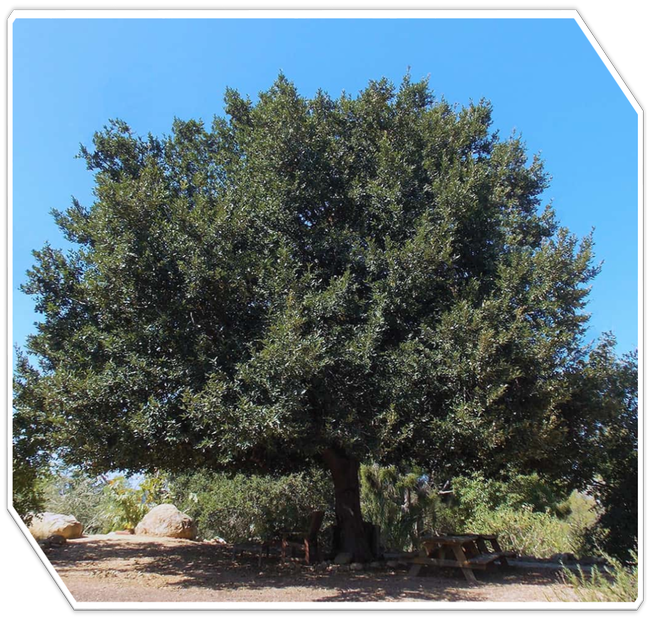
MG of SB County Tree
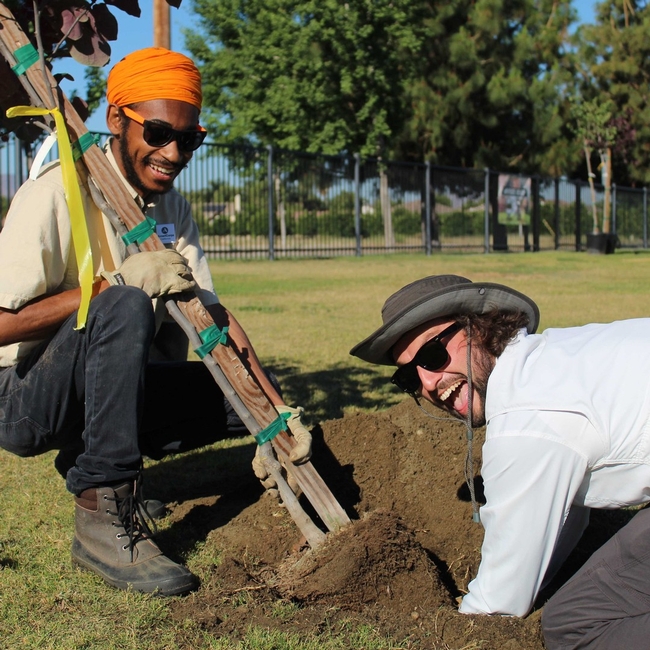
Trees for tomorrow 2021 Redlands Sports Park





